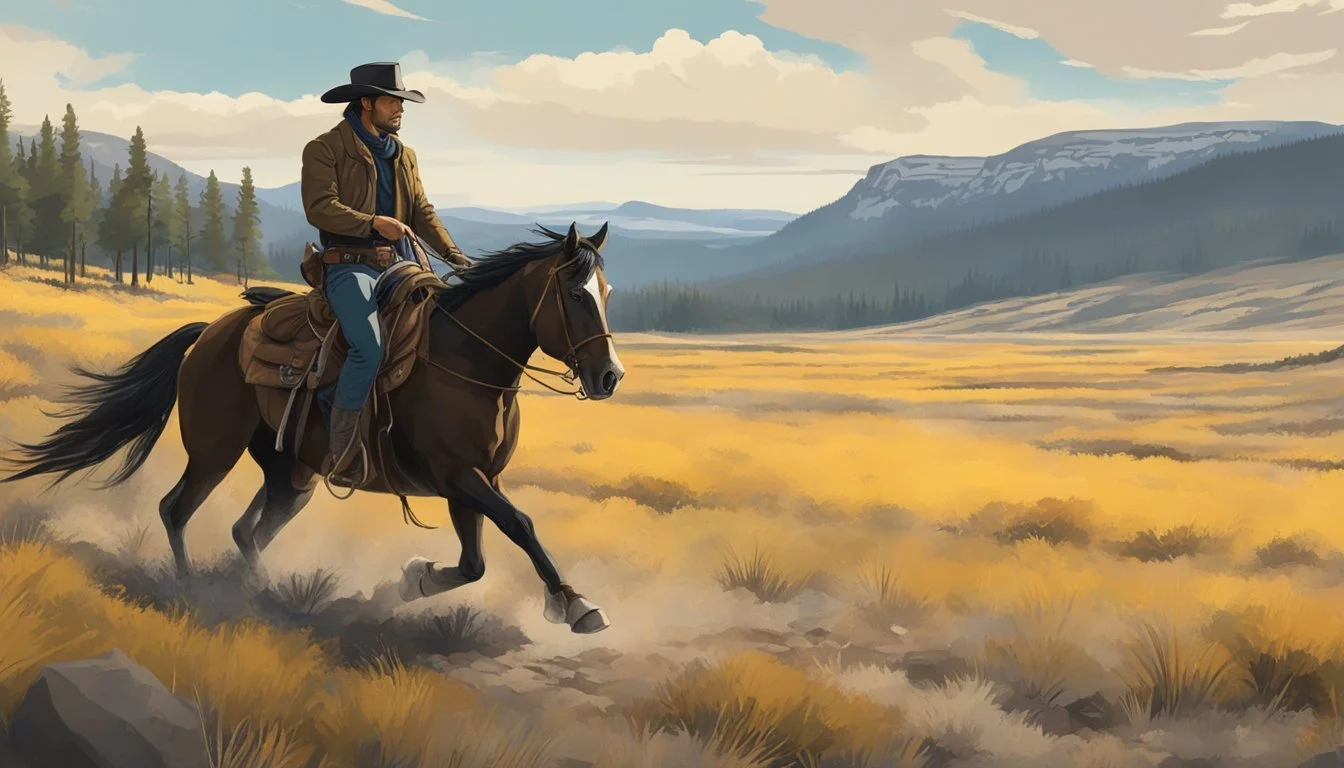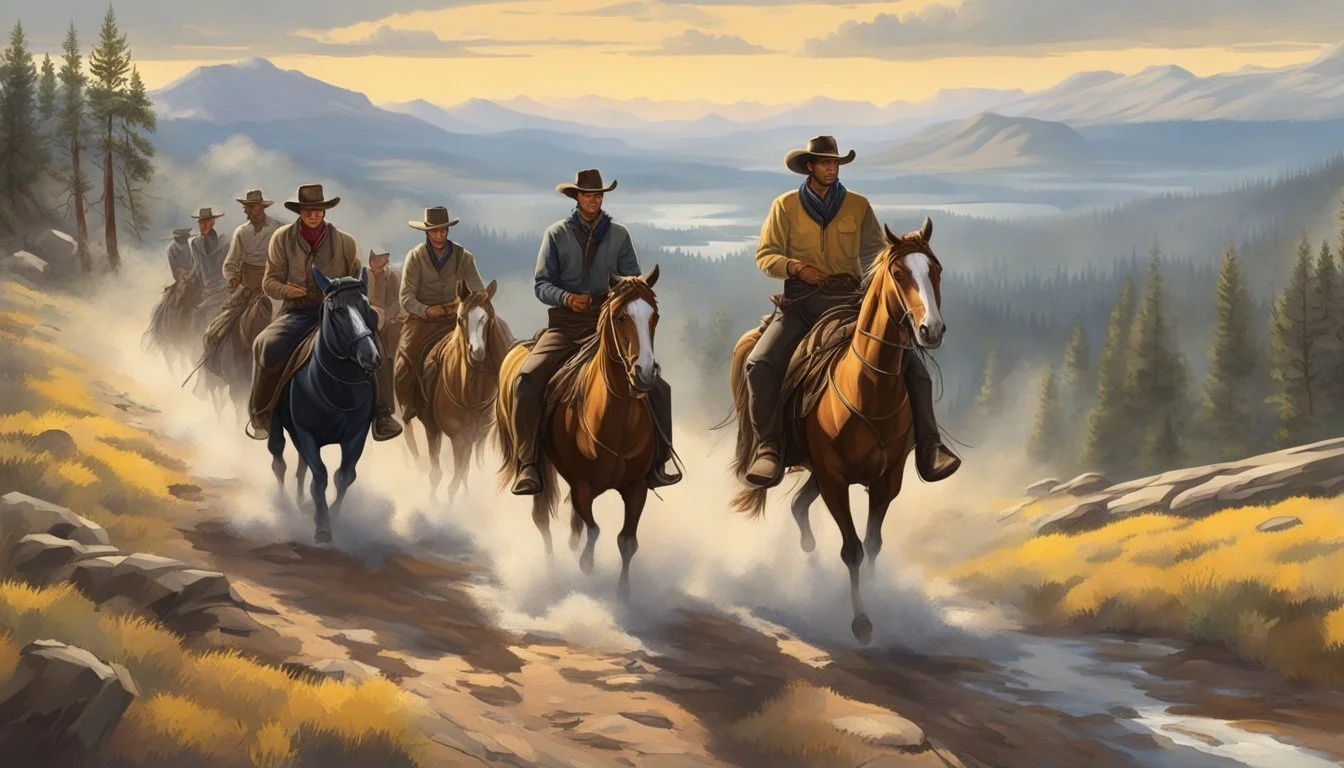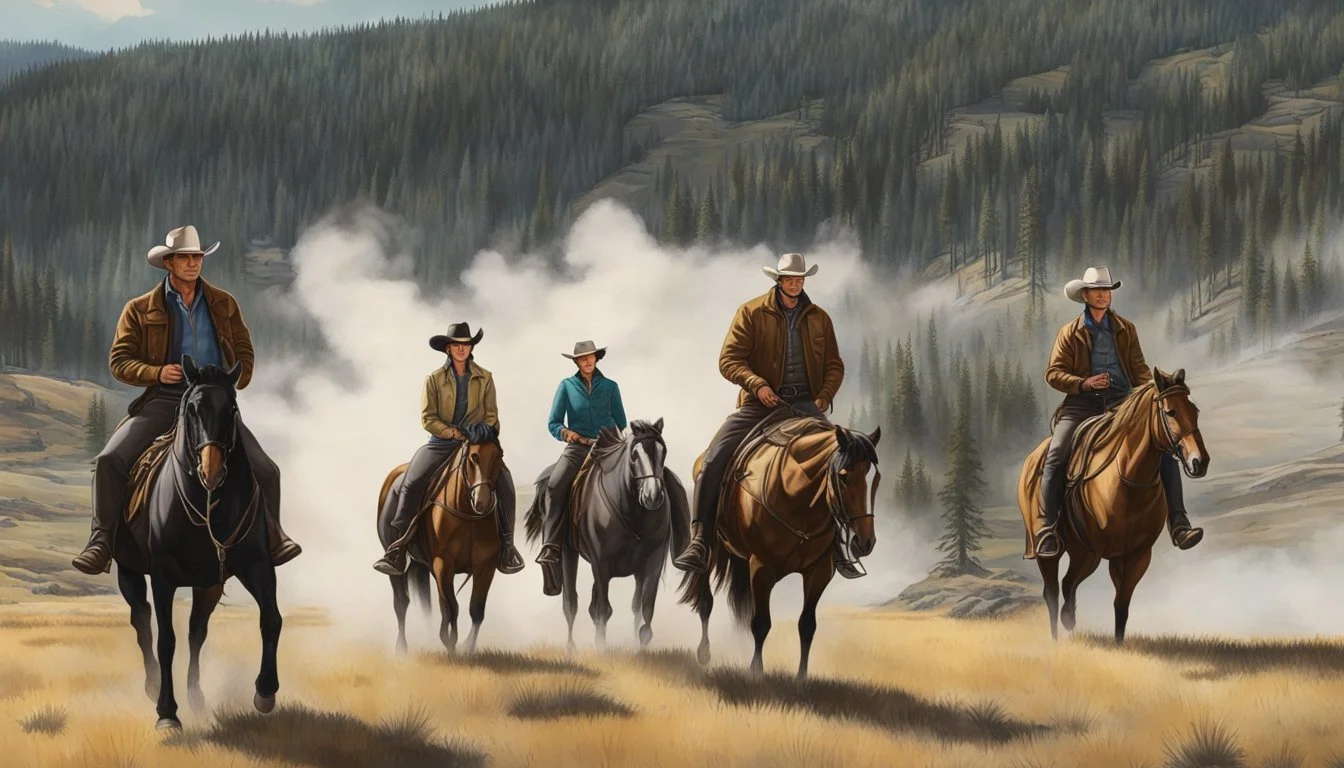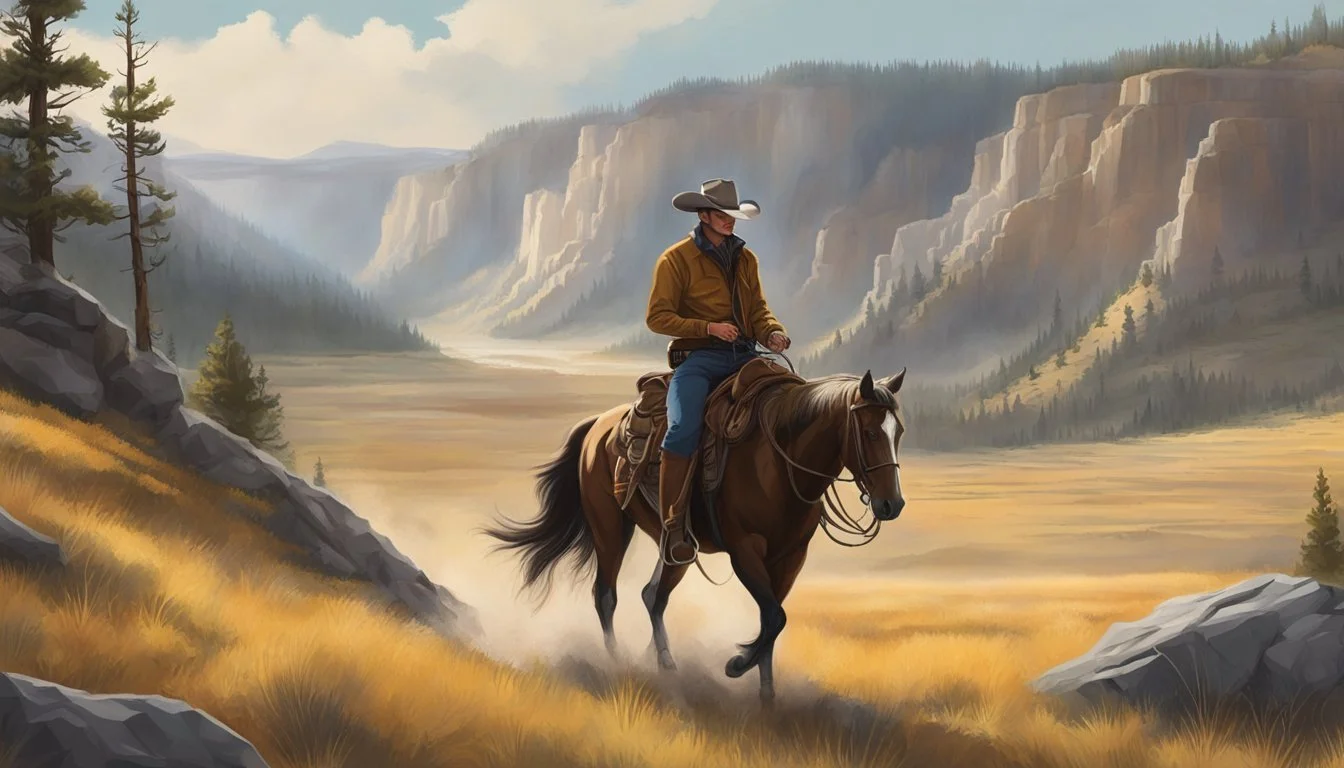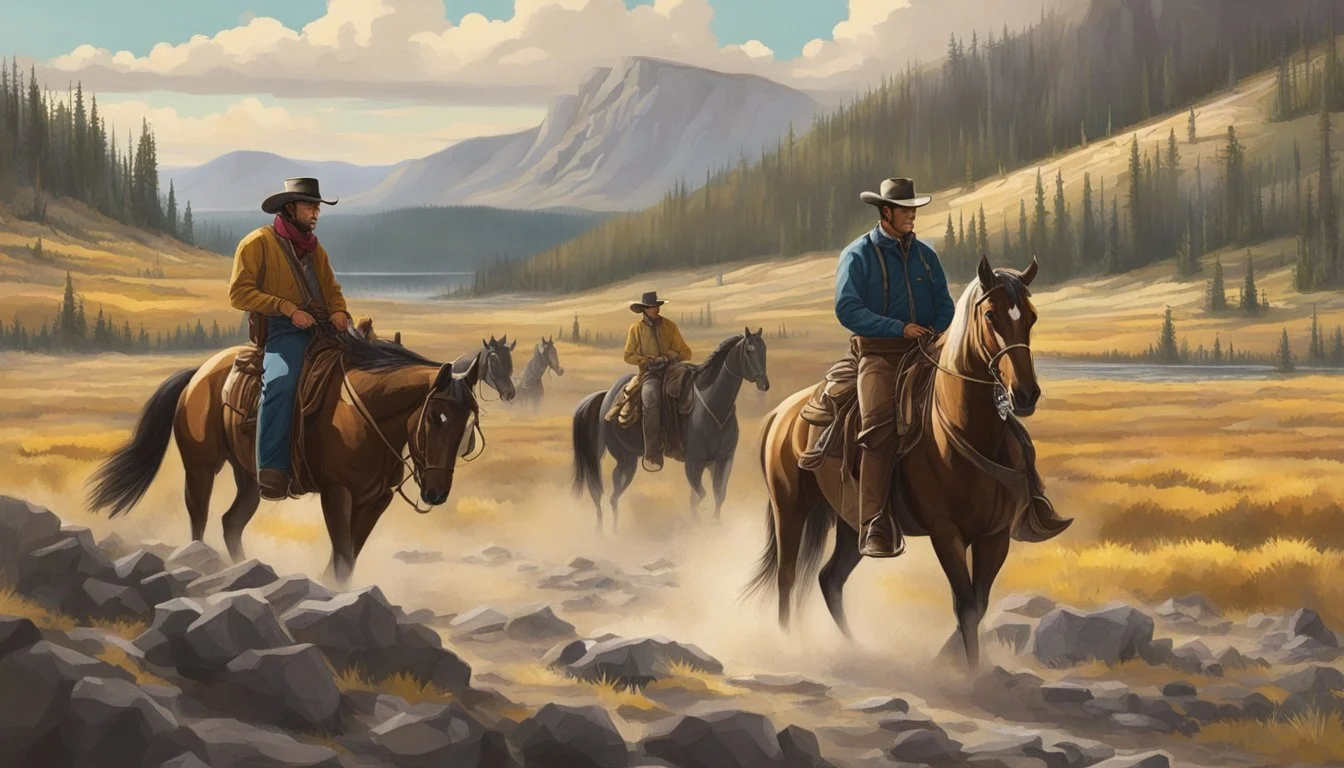Yellowstone Unleashes Dark Secrets of Rural Crime and Frontier Justice
Yellowstone, the hit TV series created by Taylor Sheridan, offers a gritty portrayal of law enforcement in rural Montana. Set against the backdrop of the sprawling Yellowstone Ranch, the show explores the complex dynamics between traditional ranching culture and modern economic pressures. The series depicts a unique blend of official and unofficial law enforcement, where the line between legal authority and personal justice often blurs.
Kevin Costner's portrayal of John Dutton, the patriarch of the Dutton family, embodies this complex relationship with the law. As a powerful rancher and the Montana Livestock Commissioner, Dutton navigates a world where conflicts are frequently settled through unconventional means. This depiction resonates with the historical realities of the American West, where frontier justice often prevailed in the absence of established legal systems.
The show's portrayal of rural crime and law enforcement has struck a chord with audiences, contributing to its status as a cultural phenomenon on the Paramount Network. Yellowstone doesn't shy away from showcasing the harsh realities and moral ambiguities of maintaining order in remote, sparsely populated areas. This authentic approach to storytelling has captivated viewers and sparked discussions about the nature of justice in rural America.
Historical and Cultural Background
Montana's rugged landscape and rich history shape the backdrop of Yellowstone's portrayal of rural crime. The series draws on complex cultural legacies involving ranching, Native American tribes, and Western mythology.
The American West and Ranching Heritage
Montana's ranching tradition dates back to the 1800s. Cattle drives and open ranges defined the era, with cowboys becoming iconic figures. The 1862 Homestead Act sparked a land rush, transforming the region.
Ranches grew into powerful economic and political forces. Family-owned operations passed down through generations faced challenges from modernization and corporate interests. This tension between old and new ways forms a key theme in Yellowstone.
The show depicts traditional ranching skills like roping and horse training. It also explores conflicts over water rights, grazing permits, and land development - issues that have long shaped Montana's rural communities.
Native Americans and the Montana Ranchlands
Indigenous peoples inhabited Montana for thousands of years before European settlement. The Crow, Blackfeet, and other tribes held deep connections to the land.
Forced relocation in the late 1800s disrupted Native communities. Reservations were established, but often on less desirable lands. This history of displacement underlies modern conflicts over territory and resources.
Yellowstone touches on complex issues of tribal sovereignty and land rights. The show portrays both cooperation and tension between Native characters and ranchers. It references historical traumas while exploring contemporary Native American experiences in Montana.
Yellowstone and the Western Genre
Yellowstone builds on a long tradition of Western storytelling. It draws inspiration from classic films and TV series set in the American frontier.
The show updates familiar Western tropes for a modern audience. Lawmen, outlaws, and frontier justice take on new forms in the 21st century. Yellowstone blends elements of the Western with contemporary crime drama.
Montana's dramatic landscapes play a crucial role, as in many Westerns. The series showcases the state's mountains, prairies, and rivers. This natural beauty contrasts with the often brutal human conflicts unfolding against its backdrop.
The Dutton Family Dynasty
The Duttons are a powerful ranching family in Montana, fiercely protective of their vast Yellowstone Ranch. Their influence shapes the region's politics, economy, and law enforcement.
John Dutton's Fight to Preserve the Ranch
John Dutton III, the patriarch of the Dutton family, stands as a formidable figure in Montana's ranching world. He leads the charge to protect the Yellowstone Ranch from various threats, including land developers and tribal interests. John's unwavering commitment to preserving his family's legacy often puts him at odds with local authorities and business rivals.
His tactics for maintaining control of the ranch sometimes skirt legal boundaries. John leverages political connections and employs aggressive strategies to fend off encroachment on his property. This includes confrontations with neighboring Native American tribes and battles against corporate entities seeking to exploit the land's resources.
John's dedication to the ranch stems from a deep-rooted sense of duty to his ancestors who established the Dutton dynasty.
Beth Dutton: A Formidable Presence
Beth Dutton, John's daughter, emerges as a fierce protector of the family's interests. Her sharp intellect and ruthless business acumen make her an invaluable asset in the Duttons' ongoing struggles.
As a corporate raider, Beth uses her financial expertise to outmaneuver the ranch's opponents. Her strategies often involve complex financial maneuvers and psychological warfare against those who threaten the Dutton legacy.
Beth's loyalty to her father and the ranch is unwavering, despite personal sacrifices and a tumultuous family history. Her presence in boardrooms and backroom deals ensures the Duttons maintain their grip on power in the region.
The Legacy of the Duttons
The Dutton family's influence extends far beyond the boundaries of their ranch. Their dynasty, built over generations, has become deeply intertwined with Montana's history and future.
The Yellowstone Ranch, spanning hundreds of thousands of acres, represents not just land ownership but a way of life. The Duttons view themselves as stewards of the American West, fighting to preserve traditions in the face of modernization and outside interests.
This legacy, however, comes with a heavy price. Each generation of Duttons faces new challenges to their dominance, from changing economic landscapes to shifting political alliances. The family's determination to hold onto their land often leads to conflict with law enforcement, rival ranchers, and corporate entities.
Socioeconomic Themes and Conflicts
"Yellowstone" explores complex socioeconomic issues facing rural America through its characters and storylines. The show highlights tensions between traditional ways of life and modern economic pressures.
Land and Water Rights Controversies
The Dutton family's struggle to maintain their vast ranch reflects real-world conflicts over land and water rights in the American West. Disputes arise between ranchers, developers, and government entities over resource allocation and usage.
Water rights become a flashpoint, with characters battling over access to rivers and streams crucial for agriculture and cattle. The show depicts legal battles and backroom deals that mirror actual challenges faced by rural landowners.
Property boundaries and easements frequently spark confrontations. Characters employ various tactics, from legal maneuvers to intimidation, to protect their interests. These conflicts underscore the vital importance of land ownership in rural economies.
Development Pressures on Rural Communities
"Yellowstone" portrays the encroachment of urban development on rural areas. Real estate developers and corporations seek to transform ranchlands into tourist destinations and luxury properties.
This influx of outside money creates economic opportunities but threatens traditional livelihoods. Local residents grapple with rising property values and the erosion of their cultural identity.
Environmental regulations add another layer of complexity. Ranchers like the Duttons must navigate conservation laws while maintaining their operations. The show highlights the tension between preserving natural habitats and supporting rural economies.
Native American Tribes and the Struggle for Sovereignty
Chief Thomas Rainwater's character embodies the ongoing fight for Native American sovereignty and economic self-determination. The show depicts conflicts over tribal land rights and resource management.
Casino development becomes a focal point, representing both economic opportunity and cultural controversy for the fictional tribe. This mirrors real-world debates over tribal gaming and its impact on reservation economies.
Land disputes between tribes and non-Native residents feature prominently. The series explores the complexities of overlapping jurisdictions and competing claims to ancestral territories.
"Yellowstone" also touches on efforts to reclaim sacred sites and preserve indigenous cultures. These storylines reflect actual struggles faced by Native American communities across the United States.
Rural Crime and Law Enforcement
Rural areas face unique challenges in maintaining law and order. Limited resources, vast territories, and close-knit communities shape the landscape of crime and policing on the frontier.
Crimes on the Frontier: The Yellowstone Experience
The Yellowstone TV series portrays a range of criminal activities specific to rural environments. Land disputes often escalate into violent confrontations. Cattle rustling, a historical frontier crime, persists as a modern-day threat to ranchers' livelihoods.
Drug trafficking takes advantage of isolated areas and limited law enforcement presence. Environmental crimes, such as illegal logging and poaching, pose significant challenges in the vast wilderness.
The show highlights how personal vendettas and family feuds can simmer for generations, occasionally erupting into violence. These conflicts blur the lines between civil disputes and criminal acts.
Rip Wheeler: Enforcer of Ranch Law
Rip Wheeler embodies the concept of unofficial law enforcement on the Yellowstone Ranch. As the ranch foreman, he operates in a gray area between legal authority and vigilante justice.
Wheeler's methods often involve intimidation and violence. He fiercely protects the Dutton family's interests, sometimes resorting to extrajudicial measures.
His character reflects the historical notion of frontier justice, where powerful landowners wielded significant influence over local law and order. Wheeler's actions raise ethical questions about the limits of private security and the role of official law enforcement in rural areas.
Challenges of Policing Rural Territories
Rural law enforcement agencies face significant obstacles in maintaining public safety. Limited budgets restrict personnel and equipment resources. Officers must cover vast geographic areas, leading to longer response times in emergencies.
Isolation can hinder inter-agency cooperation and access to specialized units. Rural departments often lack the manpower for dedicated investigative teams or SWAT units.
Community dynamics present unique challenges. Close-knit societies may be reluctant to report crimes or cooperate with investigations. The "everybody knows everybody" mentality can complicate impartial law enforcement.
Technological limitations, such as poor cellular coverage, can impede communication and data sharing. These factors combine to create a distinct set of hurdles for rural crime prevention and response.
Cinematic Elements and Storytelling
Yellowstone's visual approach and narrative techniques play a crucial role in depicting rural crime and frontier justice. The show's cinematic style and storytelling methods create an immersive portrayal of the modern American West.
Taylor Sheridan's Creative Vision
Taylor Sheridan's distinctive approach shapes Yellowstone's portrayal of rural crime. His writing and directing style blend gritty realism with dramatic flair. Sheridan's background in acting and screenwriting informs his character-driven narratives.
He focuses on complex moral dilemmas and power struggles. This approach adds depth to the show's exploration of law and order on the frontier.
Sheridan's emphasis on authenticity extends to the dialogue and character interactions. He captures the nuances of rural American speech patterns and attitudes.
Filming Locations and Authenticity
Yellowstone's use of real Montana locations adds authenticity to its depiction of rural crime. The show films primarily in Utah and Montana, showcasing the rugged landscapes of the American West.
Iconic locations like the Chief Joseph Ranch serve as the fictional Dutton family ranch. These real-world settings provide a stunning backdrop for the show's dramatic scenes.
The authentic locations help viewers connect with the characters' struggles. They also highlight the isolation and vastness that can complicate law enforcement in rural areas.
Local communities often participate as extras, adding to the genuine feel of the show's rural setting.
Visual Storytelling and Character Development
Yellowstone employs visual storytelling techniques to develop characters and convey themes of crime and justice. Wide landscape shots contrast with intimate close-ups, reflecting characters' internal conflicts.
The show's cinematography emphasizes the harsh beauty of the frontier. This visual approach underscores the unforgiving nature of rural crime and its consequences.
Costume design and set decoration contribute to character development. These elements provide visual cues about characters' backgrounds and motivations.
The series uses color palettes and lighting to set mood and tone. Darker scenes often accompany moments of moral ambiguity or criminal activity.
Impact and Criticism
Yellowstone has made a significant mark on television and sparked discussions about its portrayal of rural Montana. The show's influence extends beyond entertainment, touching on cultural and political themes.
Yellowstone's Influence on Popular Culture
Yellowstone has revitalized the modern Western genre. Its success has led to a surge in interest in rural American stories and lifestyles. The show's fashion choices, particularly cowboy hats and ranch wear, have influenced clothing trends. Yellowstone-themed merchandise and tourism have seen a notable increase, with fans visiting filming locations in Montana. The series has also inspired spin-offs and similar productions, cementing its place in contemporary pop culture.
Debates Around Representation and Realism
Critics have scrutinized Yellowstone's portrayal of Montana life. Some praise the show for highlighting rural issues often overlooked in mainstream media. Others argue it romanticizes ranch life and oversimplifies complex land disputes. The depiction of Native American characters has been both lauded for inclusion and criticized for perpetuating stereotypes. Law enforcement portrayal in the series has been questioned for its accuracy, with some viewing it as an exaggeration of rural policing practices.
Critiques of the Show's Political Underpinnings
Yellowstone has been labeled a "red-state show" due to its themes of cultural preservation and skepticism towards change. Some viewers appreciate its exploration of conservative values and rural-urban divides. Critics argue the series oversimplifies political issues and reinforces negative stereotypes about progressive policies. The show's treatment of land rights, government intervention, and environmental concerns has sparked debates about its underlying political message. Despite controversies, Yellowstone's nuanced characters and complex storylines continue to engage audiences across political spectrums.
The Yellowstone Legacy and Expansion
Yellowstone's impact extends far beyond its riveting storylines, shaping television trends and local economies. The franchise has expanded through prequel series, revitalized the Western genre, and significantly boosted Montana's economic landscape.
Prequel Series: Expanding the Dutton Universe
Taylor Sheridan's vision for Yellowstone has grown into a multi-series franchise. "1883" transports viewers to the late 19th century, chronicling the Dutton family's perilous journey westward. "1923" bridges the gap between "1883" and the present-day series, exploring the Dutton legacy during Prohibition and the Great Depression.
These prequels provide rich historical context, deepening audience understanding of the Dutton family's roots and the challenges they faced in establishing their ranch. The expansion of the Yellowstone universe allows for a more comprehensive exploration of themes like manifest destiny, survival, and the American dream.
The Show's Role in Reviving the Western on TV
Yellowstone has sparked a renaissance of Western-themed content on television. Its success has encouraged networks and streaming platforms to invest in similar productions, breathing new life into a genre that had long been overlooked.
The show's blend of traditional Western elements with contemporary issues has proven appealing to modern audiences. It tackles topics such as land rights, environmental conservation, and the clash between rural traditions and urban development.
Yellowstone's popularity has paved the way for other Western-inspired series, contributing to a broader resurgence of interest in stories set in the American West.
Yellowstone's Contribution to Montana's Economy
The show has had a substantial economic impact on Montana, particularly in the Paradise Valley region where it is filmed. Tourism has surged as fans flock to visit locations featured in the series, including the Chief Joseph Ranch, which serves as the iconic Dutton family home.
Local businesses have benefited from increased visitor numbers, with hotels, restaurants, and tour operators seeing a boost in revenue. The real estate market has also been affected, with some areas experiencing increased interest from out-of-state buyers inspired by the show's portrayal of Montana life.
Yellowstone's production has created job opportunities for local crew members and actors, further contributing to the state's economy. The show's success has put Montana on the map as a prime filming location, potentially attracting more productions to the area.

